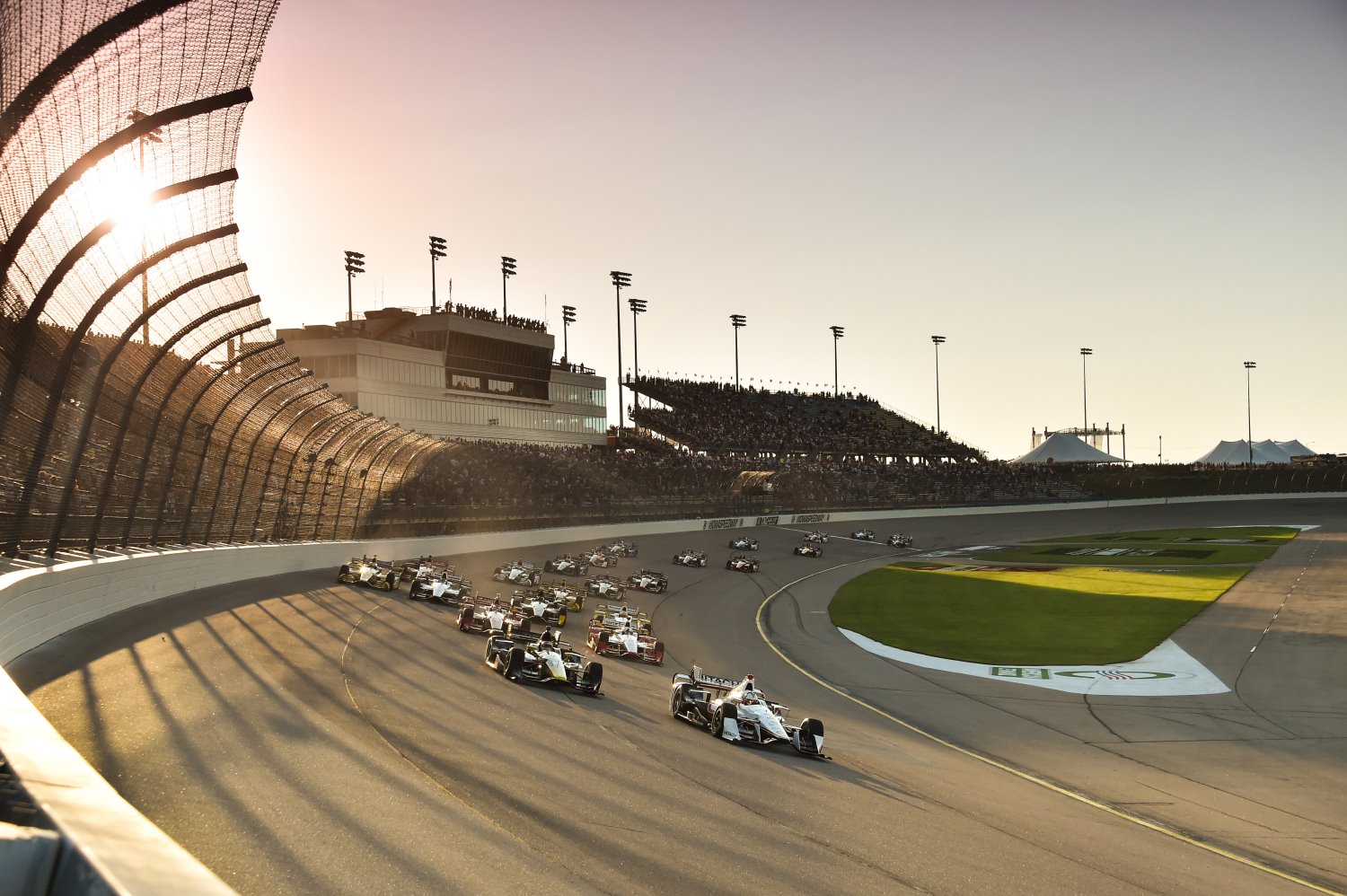Short ovals separate IndyCar from all the rest
 |
| Short oval action at Iowa |
The Verizon IndyCar Series likes to boast that its drivers are perhaps the most versatile — maybe the best — in the world because of the variety of tracks included in the championship.
There's the superspeedways, led by the 2.5-mile Indianapolis Motor Speedway, where speeds well in excess of 200 mph are sustained over a 500-mile distance. There's the natural terrain road courses, like the 4-mile long Road America in Elkhart Lake, Wis., full of quick right-and-left turns and elevation changes through a lush green park-like setting. There's the temporary street courses, the most famous and successful in Long Beach, Calif., where speed limits don't apply to racers trying to maneuver through tight and (relatively) slow corners on a narrow asphalt circuit lined by unforgiving concrete barriers.
And then there are the short ovals, like Phoenix International Raceway, site of Saturday night's 250-mile Desert Diamond West Valley Phoenix Grand Prix. These are 1-mile or so bullrings, among the most physically demanding and intense races in the sport's century-plus history, as the leading drivers in the fastest cars try to get past the traffic jams created by their slower competitors.
Their split-second decisions often determine who holds a trophy and who holds a grudge.
None other than Mario Andretti, four-time IndyCar champion and among racing's all-time greats, calls the short ovals "the most difficult to drive."
"These are a real marquee for the series and always has been because it provides the most action," said Andretti, with four PIR wins. "OK, you're pretty much flat (full throttle) as you qualify, but when everybody's together and the track gets slicker, it's another story. Historically, here (PIR), we've seen some fabulous racing."
Ryan Hunter-Reay, the 2012 series champion and 2014 Indy 500 winner, describes this type of racing as being "like flying a fighter jet in a soup bowl."
Hunter-Reay has three victories at the Milwaukee Mile and three at the 7/8-mile Iowa Speedway.
"The G forces are insane," said the driver of the DHL-Honda owned by Michael Andretti. "We pull a sustained 4.5 G at Iowa, which is amazing. We are on the edge all the time. Once we get into traffic and start mixing it up, the (aerodynamic) downforce drop-off is immense.
"It's an extremely tricky form of racing. It's my favorite form of racing for that reason."
Tony Kanaan won at PIR in 2003 and '04. The NTT Data-Chevrolet driver admits, "These type of tracks are not for everybody. Tracks like this you can see the divide (of skill) among the drivers.
"This is one of the most physical, difficult tracks we go to. We're going as fast as we did in the 1990s with 400 horsepower less. All the speed is through the corners. We're going 25 mph faster through the corners than we used to."
Helio Castroneves was the fastest in February's preseason testing at the Avondale oval, at just under 191 mph, lapping in 19.2 seconds. The official IndyCar 1-lap record is 183.599 mph set in 1996 by Fountain Hills resident Arie Luyendyk, but the technical rules for cars of that era don't compare to today's.
"These are incredibly high speeds," said Dario Franchitti, the three-time Indy 500 winner who was forced into retirement by multiple concussions and other injuries when he was catapulted into a fence in a 2013 street race in Houston. "The cars are running so close together it's action all the time. It's guys fighting for position. It's guys lapping traffic.
"The one thing that differentiates it from other forms of racing is the speed. Not only of the cars, but the speed at which things happen. It's exciting. It was one of my favorite disciplines of the sport to watch and certainly to do.
"At Phoenix, in the middle of the corner, they will be pulling over 5 sustained Gs, lap after lap after lap. You're constantly under those loads.
"When you're finished a short oval race, you know you've had a day's work, mentally and physically." Michael Knight/AZcentral.com
